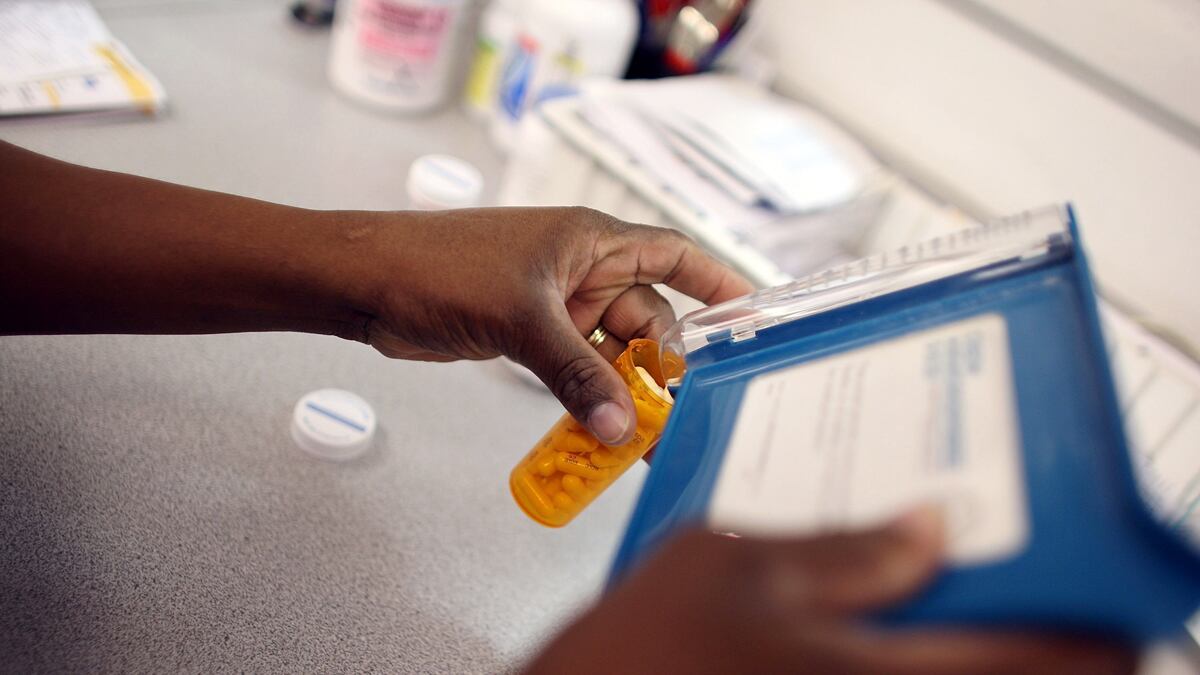One cool winter day two years ago, I deliberately did what most sane people try very hard not to do: I traveled to Tijuana and acquired a parasite infection.
Call it stupidity, idiocy, madness. Call it lunacy. I consider it biological gonzo journalism in pursuit of the ultimate story—the betterment of my own health.
Let me explain. I’ve had asthma for as long as I can remember. As a child, it landed me in the emergency room several times a year, my lips and nails purple from lack of oxygen, my limbs slack from breathlessness, my parents frantic from my seemingly imminent suffocation.
The asthma has improved with age, but it never went away entirely. Like many among the 25 million Americans with the lung disease, roughly 8 percent of the population, I am utterly dependent on an inhaler for day-to-day functioning.
I’ve also had food allergies for as long as I can remember, to peanuts and sesame. The reaction isn’t life-threatening, but it isn’t pleasant either.
And that’s not all.
At age 11, a nickel-size bald spot appeared on the back of my head. It signaled the arrival of an autoimmune disease called alopecia areata. Whereas in allergic diseases like hay fever the immune system turns savagely on harmless proteins in the environment—tree pollens, say—in autoimmune disease, the immune system attacks the self.
The very white blood cells tasked with protecting me had turned on my hair follicles.
A few years after that first bald spot showed up, I was completely hairless—no eyebrows, no eyelashes, no forearm hair. Just skin.
I coped mostly by ignoring the suite of illnesses. And really, what bothered me most wasn’t the problems themselves but that no one could explain what had happened to me.

As a science writer in my 30s, I revisited the issue. And one thing was immediately clear. The real question wasn’t what happened to me but what happened to us. Scientists were throwing around the word “epidemic” to describe the steep rise in recent decades of immune-related disorders. It was as if the human immune system had suddenly and inexplicably gone berserk.
In the developed world, allergic diseases like asthma and hay fever have increased between two- and three-fold since the ’50s. In certain populations—usually in high-latitude, industrialized nations—the incidence of inflammatory bowel disease, a family of painful gut disorders, has increased by significantly more.
In some northern European countries, type 1 diabetes, an autoimmune disease in which the immune system attacks the insulin-secreting pancreas, has surged so dramatically that some consider it a public health crisis. And it’s predicted to double again within the decade.
What could explain these alarming trends? Theories abounded. We encountered too many pollutants. We were stressed. We were hyperexposed to allergens. We had bad diets. Others blamed autoimmune disease in particular on infections—some bug that camouflaged itself as you and then, when you pursued it, tricked your immune system into hounding yourself.
But the epidemiology just didn’t match up. In the early 20th century, before antibiotics and most vaccines, we suffered from far more infections than now. And yet we seemed to have had far fewer autoimmune and allergic diseases.
Allergens like pollens, dust mites, and cat hair, meanwhile, weren’t exactly new to the human experience. They’d been alighting in our noses for many millennia. And while pollution clearly wasn’t good for us, at least the airborne kind had declined in the same period—the late 20th century—in which respiratory allergies had burgeoned.
What explained these patterns better? It wasn’t pretty, but it was profound. It stemmed from the repeated observation that people living in environments that resembled our evolutionary past—rife with mud, animals, parasites, and sundry microbes—suffered from these problems far less often than, say, me in my apartment in the mostly paved-over island of Manhattan.
Stumbling upon this minor observation was the beginning of a journey, a thread that led to a tapestry of science that, as a whole, comprises a kind of revolution taking place beneath our very feet.
In the early 21st century, scientists began to see with new clarity that you are not really you at all—that you are an ecosystem of mutually dependent organisms, an aggregation of life whose stability and coherence requires the utmost attention and care.
It was Joshua Lederberg who, just a decade ago, coined the term that best encapsulates the newly evident weirdness of the human condition.
You are a “superorganism”—an organism squared.
Here are your stats. In your body, bacterial cells outnumber human cells by 10 to 1. (As one scientist once told me: we’re born 100 percent human. We die 90 percent microbe.) Forget who’s bigger and who’s badder, and consider what this means in terms of information. If you look at the combined genome of that community, most of which lives in your gut, it contains 150 times the instructions contained in “your” genes.
That’s worth pondering. If the entire recipe for a human being fits on a single page, the instructions for the “microbial organ” at the heart of that being fill a 150-page tome. But here’s the key. The directions for the superorganism—the walking, living, eating, breathing, correctly functioning you—comprise 151 pages.
You are everything together.
Which brings me to the problem: we haven’t necessarily added something that’s making us sick; we’ve removed something—many things, actually—that have been with us since time immemorial and which, in very complex ways, make us well.
What have we lost? Probably some purely beneficial organisms, true mutualist microbes that disappeared without our noticing. Definitely a few unpleasant characters, like parasitic worms, which we deliberately and with good reason evicted. And a few infamous bugs, like the corkscrew-shaped bacterium called Helicobacter pylori, which can be downright carcinogenic.
I won’t say I’m not happy about these departures. But my feelings don’t change the basic facts of biological interdependence. As the immunologist Graham Rook is fond of saying, co-evolution invariably leads to codependence. And when you tear asunder codependent organisms, trouble comes knocking.
That’s my wheezing, my food allergies, and maybe even my alopecia areata. That’s the roughly 1 in 5 Americans with allergic disease, and the 1 in 20 with an autoimmune disease.
We are suffering from an epidemic of absence. It’s a strange way for loneliness to manifest, this derangement of the immune system, but who said systems biology would be tidy and predictable?
The task scientists now face is the reconstruction of the superorganism. In the future, they’ll likely replace the inputs our immune systems expect with stimuli designed to provide only benefits, and bear no costs.
But I don’t live in the future. I want to know now: What happens when you reinstate organisms from the world of yore into a body plagued by postmodern immune dysfunction? Will any of my diseases disappear?
One bracing day, that question brought me to a clean spare room in Tijuana, Mexico, where a bandage is pressed against my left bicep. Within moments, I feel what’s perhaps the most famous sensation in all parasitology: the burning, itching, tingling sensation of 30 microscopic hookworm larvae burrowing through my skin.
The next few months are a rollercoaster ride of good, bad, and ugly during which I discover two things. Yes, the hookworm Necator americanus can change how your immune system works for the better. Peach fuzz sprouted on previously hairless skin. Sinuses were pried wide open as if by a wonder drug.
But the parasitologist Charles Wardell Stiles wasn’t kidding when, after discovering that hookworm infested huge swaths of the American South in the early 20th century, he christened it the “American murderer.” The parasite, which sucks blood from your intestinal wall and which Stiles blamed for economically retarding half the U.S., really hurts.
Would I repeat the experiment? No. But that doesn’t change the basic lesson. The pesky hanger-on evidently possessed an understanding of my immune system that allopathic medicine has yet to match.






